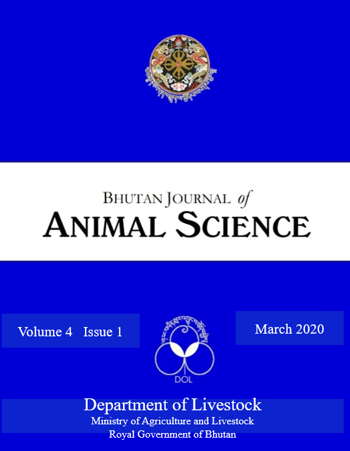Benefit-cost analysis of pullet rearing in Sarpang district
Keywords:
Benefit cost, cost of production, day old chicks, profitable, pulletAbstract
The study was designed to assess the benefit-cost analysis of pullet rearing in Sarpang district. A total of 2000 numbers of commercial Hy-line Brown Day-Old Chicks were placed at the stocking density of 10 birds/m2 in a private pullet rearing farm. The chicks were reared in a semi-permanent shed in accordance with the entrepreneur’s normal management practices. A total depreciated fixed cost, variable cost and total revenue were calculated to compute the unit cost of pullet production at 56 days age. The study revealed that 88 % of the total cost of production was incurred on variable cost and 12 % for fixed cost. Amongst the variable cost, the highest expenditure was recorded on feed cost and least on utilities. For the total fixed cost, large share of investment of 50.23 % was incurred on poultry shed construction, and the least of 1% on chick drinker. The average unit cost of producing eight weeks old pullet was computed at Nu. 131. Rearing 2000 DoCs earns a net profit of Nu. 89,451 at the existing farm gate price of Nu.175. The profitability would further increase with increase in production cycles from four to five per annum. This study indicates that pullet rearing is a profitable venture and need to be encouraged in other regions of the country
Downloads
Published
Issue
Section
Categories
License
Copyright (c) 2020 BJAS

This work is licensed under a Creative Commons Attribution 4.0 International License.






